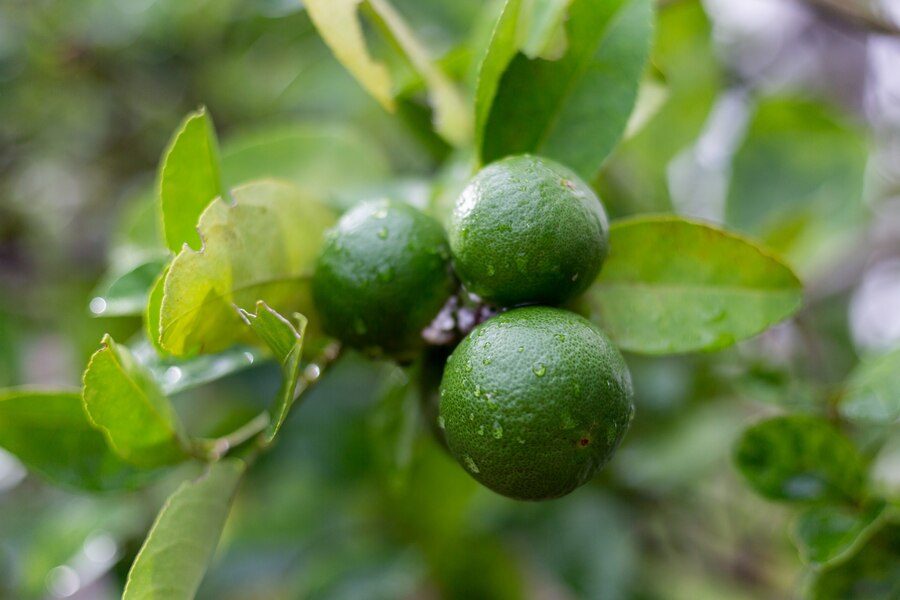Lemons are one of the most versatile fruits. They are small, yellow, and full of flavour. From adding zest to our meals to making refreshing drinks, lemons are versatile. But have you ever thought of where the lemons actually come from or how they reach your table? Lemon farming is indeed a long process requiring patience and care. Here is the complete journey of lemon farming from seed planting to harvesting the juicy fruits.
Steps to Grow Lemons:
If you want to grow lemons on your farm, you can read about the processes mentioned below. These processes will help you grow healthy juicy lemons.
Choosing the Right Place for Lemon Farming
The first thing to do is to choose the proper location for lemon farming. These fruits grow well in tropical and subtropical climates. One should grow these fruits in a place where there is a lot of sunlight and well-drained soil to flourish. The soil should not retain water for more than a few days because lemon trees do not tolerate waterlogging well. One has to check the pH level of the soil, which should fall in the range of 5.5 and 7.5. It is too acidic or alkaline, which will affect the growth of the lemon trees.
Land Preparation
Soil preparation is a crucial step in lemon farming. Healthy foundations enable the trees to grow tall and produce high-quality fruits. The soil needs to be tilled and levelled before planting the saplings of lemon. It breaks hard soil, destroys weeds, and helps in the proper mixing of nutrients.
In this stage, a Mini Tractor is very helpful. Mini tractors are light, easy to handle and are best suited for small to medium-level farms. The mini tractor helps to plough the soil and till the ground. They use the mini tractor so that the soil can be loosened underneath, which will allow the lemon tree roots to grow deep and strong.
Plantation Process
Lemon trees are planted on the prepared soil. Saplings are usually planted instead of seeds because they grow faster and have better chances of survival. The saplings are planted in rows with enough gaps between them for proper air circulation and sunbeam. Usually, every sapling is placed in a small pit containing organic compost or manure to provide extra nutrients.
Care for Lemons
Once the trees are planted, they also require a bit of care to grow healthy. The new planting, especially in the first few months, needs water, but there is a taboo on overwatering as that will damage its roots.
Fertilizers are another significant aspect of lemon farming. Some of the organic fertilizers that are used are cow dung or compost. After the application of fertilizers, other damaging characteristics, such as pests and diseases that may destroy the lemon trees, will be discovered. Spraying organic pesticides and the cleanness of the farm will control such threats.
Pruning is another task. Farmers cut off dead or weak branches to encourage new, healthy ones to emerge. It helps the tree to divert energy towards bigger, juicier lemons.
Flowering and Fruit Development
Lemon trees produce flowers within 2–3 years from the stage of planting. The flowers emit a typical fragrance, which attracts bees and other insects to aid in pollination. Once the flowers are pollinated, they change into small green fruits, and eventually, large fruits ripen and turn bright yellow.
In this stage, care is intensive. Fruit development requires supplemental irrigation and fertilization for the trees. For extreme heat or strong winds, the fruit may use nets or shading to provide shelter to the fruits.
Harvesting Process
When the lemons turn bright yellow and are firm to the touch, they are ready for harvest. Harvesting is done carefully by hand to avoid damaging the fruits. Farmers use pruning shears or knives to cut the lemons from the tree, leaving a small stem attached.
Post-Harvesting Process
After harvesting, lemons need to be sorted and packed. The fruits are first cleaned to remove dirt and dust. Then, they are sorted based on size, colour, and quality. Only the best lemons make it to the market.
During this stage, tractors like a Mahindra Tractor can be used. These tractors are quite powerful and have good lifting capacity. They can transport lemons from the farm to storage areas or processing centres. Such tractors can carry heavy loads; therefore, it may make post-harvest much easier and faster.
Once sorted, the lemons are packed in boxes or crates and sent to markets, supermarkets, or export centres. Proper packaging ensures that the lemons stay fresh and do not get bruised during transport.
Challenges in Lemon Farming
Lemon farming is certainly not without the problems. It is susceptible to yield variability caused by changes in weather, pests, and diseases. For instance, excessive rainfall may lead to waterlogging, whereas severe heat can cause damage to the fruits. Therefore, farmers have to be vigilant and use proper techniques to overcome these issues.
Another challenge is maintaining soil health. Continuous farming reduces nutrient levels in the soil, so one has to keep changing crops and using organic fertilizers.
The Final Words:
From the farm to the kitchen, the journey of a lemon is no easy venture. Every single step-from preparing the soil for planting to transferring it from the fields to the market is crucial in the production of quality lemons. The next time you squeeze a lemon into your drink or dish, bear in mind the amount of effort taken to get that little yellow fruit to the table. Once proper care is taken along with the right tools, farmers will be able to continue cultivating these wonderful fruits for generations.












